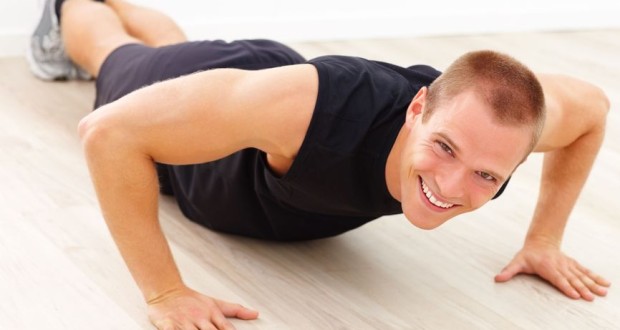When it comes to exercise techniques, there are few activities as widely known and popular as the push up. Given that pushups are an incredibly simple exercise and require nothing more than solid ground to perform, it’s no wonder that millions of people rely on them to add bulk to their bodies. Pushups also have a rich history; millennia before the advent of modern exercise equipment, soldiers from the Median Empire (located in the modern day countries of Iran, Iraq and Turkey) performed pushups on wooden boards as part of their training.
Though it’s virtually impossible to find a person who doesn’t know what a pushup is, there are still a good number of questions surrounding this basic exercise. Even those who exercise regularly still ask questions about the proper form, speed and regimen for performing pushups. Fortunately, medical science and fitness experts have studied pushups in detail, and have unearthed some helpful answers to the following pushup-related questions:
Where Should I Position My Hands, Arms and Shoulders? – Believe it or not, the answer to this question depends on what you are looking to get out of your pushups. When it comes to positioning, pushups can be divided into three categories: neutral stance, wide stance and narrow stance. A neutral stance pushup is performed with the arms positioned right in front of the shoulders. This approach represents the most balanced option, as it strengthens the muscles of the arms, chest and shoulders equally.
If you are more concerned about your outer chest muscles, then pick the wide stance. As its name implies, this position involves placing your hands further apart from each other. The drawback of this method is that is deemphasizes your arms and inner chest, meaning that they will see less benefit from your pushups. In contrast, narrow stance pushups benefit the arms (especially the triceps muscles), inner chest and abs at the expense of the outer chest muscles. If you’re used to wide or neutral stance pushups and would like to try a narrow stance, be advised that this type of pushup is considered the most taxing to perform.
Which is Better – Slow or Fast Pushups? – Slow pushups place a greater strain on the body’s muscles, making them more of a challenge. Given this fact, it would seem that pushups performed at a slower speed lead to a greater gain in strength and muscle mass. According to recent study published in the Journal of Strength and Conditioning Research, however, the opposite may be true. This report found that performing fast pushups lead to greater gains in muscle among the study’s participants.
How Many Pushups Should I Do? – A common complaint among novice exercisers is that they see little muscle gain from pushups. These poor results have a simple explanation – these individuals just aren’t doing enough pushups. In order to build mass, muscles must be worked to the point of exhaustion. This means that instead of stopping at, say, 10 pushups, you should perform as many pushups as possible. Aim for two to three total sets, with a few minutes of rest in between.
Can I Do Pushups Every Day? – After a workout, the body’s muscles need a few days to recover and rebuild themselves. This rule also generally applies to pushups, as many health experts advise performing this exercise every other day. It bears mentioning, however, that some particularly healthy and robust individuals are able to do pushups daily with no ill effects.
What If I’m Not Strong Enough to Perform Pushups? – People who have neglected to exercise for many years are often not physically able to do pushups. Fortunately, modified versions of pushups can strengthen both the arms and chest. One such alternative is wall pushups; as its name indicates, this exercise involves using a wall to perform standing pushups. While standing arms length from your wall of choice, place your hands on the wall and lean forward until your chin nearly touches the wall’s surface. Gradually push yourself back to your starting point, and repeat the process as many times as possible.
After your upper body sufficiently strengthened by wall pushups, you can then start doing pushups on your knees. Not surprisingly, knee pushups are performed from a kneeling position; simply lower your chin until it nears the floor, and then slowly raise your upper body upwards. Once you are able to quickly burn through sets of knee pushups, you should be able to transition to standard pushups without much difficulty.
Exactly How Effective Are Pushups? – The longstanding popularity of pushups is not only due to their simplicity, but also their noticeable impact on the body. Pushups bolster a wide range of muscles, including those located in the chest, arms, back and core (the middle section of the body). Routine sets of pushups should make all of these muscles noticeably bigger and more defined. In addition to being stronger, the muscles affected by pushups should develop a higher endurance level for weightlifting, allowing you to reap increased benefits from both free weights and exercise machines.
Increased physical strength isn’t the only benefit of pushups. While performing pushups, the heart ramps up its distribution of blood. In turn, this increases the body’s metabolism, meaning that it burns off calories at a faster clip. This increase in metabolism can last for hours, making it easier for the body to keep off unwanted weight.
 Natural Knowledge 24/7 Educate yourself with nutrition, health and fitness knowledge.
Natural Knowledge 24/7 Educate yourself with nutrition, health and fitness knowledge.






